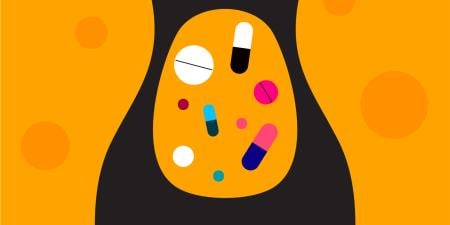Case
Dr. Simpson, a busy oncologist, had been hearing about impending drug shortages for some time but had never given the issue much thought until the day he called the pharmacy and received the unpleasant news that there was a “severe shortage” of the drug he had started several patients on the previous month.
“Are you sure?” he asked incredulously. The drug in question wasn’t some expensive, novel chemotherapeutic agent. It was a reasonably priced generic that had been available for years to treat a variety of cancers.
Dr. Simpson thought about how best to use the limited supply of the drug his practice would receive. He had started both David and Justin on the drug the month before and wanted to switch one of them to another drug now, rather than making a change later in the treatment course. After looking into other chemotherapeutic agents, Dr. Simpson believed the effectiveness of this particular drug combined with its limited side effects made it the preferred agent for both patients.
He recalled the conversation he had with David, his 71-year-old patient whom he had treated for cancer several years earlier, and who had since been in remission. David had recently come into the hospital after experiencing progressive and severe back pain for several weeks. His cancer had metastasized to his spine. Solemnly, Dr. Simpson told David and his family that now the aim of treatment was not to cure, but to lengthen and improve the quality of his life. David had tolerated the drug well in the past, and, because of its favorable side-effect profile and David’s relative ill health, Dr. Simpson said it was the best choice going forward. If David reacted to the drug as he had in the past, the treatment could again extend his life by months or even years.
Dr. Simpson also thought of the last time Justin came into his clinic. A jovial man in his early 60s, Justin had recently been diagnosed with a primary cancer and was otherwise in good health. Despite his diagnosis, Justin remained quite positive—and with good reason: Dr. Simpson believed Justin had a very good chance of cure with this drug. There were other drugs Dr. Simpson thought could be substituted, but those had less robust evidence supporting their use, were more expensive, and often had more side effects.
Commentary
Medications shortages have become an increasingly frequent problem in the United States health care system and threaten quality patient care. The number of drug shortages tripled from 2005 to 2010, affecting major classes of therapeutics including oncology agents (28 percent), antibiotics (13 percent), and electrolytes/nutritional agents (11 percent) [1]. The majority of shortages involve sterile injectable medications (80 percent), primarily due to problems at manufacturing facilities (43 percent), delays in manufacturing or shipping (15 percent), or shortage of the active ingredient (10 percent) [1]. These drug shortages are often unpredictable and may persist over the short or long term. It is important for clinicians such as Dr. Simpson to apply ethical reasoning to allocating scarce resources when drug rationing becomes necessary in clinical practice.
Physicians have a fiduciary responsibility to promote the welfare and best interests of their patients, so it can be uncomfortable to ration a drug or other limited resource (e.g., ICU bed) and thus promote the best interest of one patient over that of another. In some cases it may be possible to substitute for the drug in short supply with an equivalent alternative agent, but often no acceptable substitute exists. This is frequently the case in oncology therapeutics. When there is no equivalent alternative to a scarce resource, physicians are in the “unconscionable position” of being forced to choose who receives the scarce resource and who does not [1]. It is critical that physicians use evidence-based medicine and ethical analysis of treatment goals, rather than relying on emotional biases or social-worth criteria, in prescribing a medication of limited availability.
Allocation of a scarce medication or medical resource should be made with evidence-based criteria, transparency, and consistency, with mechanisms for appeal in place should patients or their family members feel that a decision was unfair [2]. Unless a demonstrable public health benefit exists (e.g., vaccination of health care workers during a pandemic) all those in similar clinical situations should be treated fairly, with no patient having increased access to the limited resource due to perceived importance or social worth [2]. Clinicians should promptly and thoroughly evaluate the available medical literature for evidence of clinical benefit. The primary criterion for allocating a scarce drug to one patient over another should be evidence of a superior therapeutic effect in that particular patient [2].
While drug shortages clearly have a significant impact on all fields of medicine, in oncology the repercussions of drug shortages have been keenly felt. Chemotherapy shortages lead to adverse patient outcomes with increased toxicities, inferior efficacies, and elimination of curative options associated with alternative regimens [3]. In a study of pediatric patients with Hodgkin lymphoma, Metzger et al. demonstrated that substituting a promising alternative for a proven effective chemotherapy agent that had become unavailable due to a shortage led to inferior event-free survival at 2 years (75 percent with the alternative agent, rather than 88 percent with the standard agent) and resulted in exposure to increased toxicity [4]. Oncology drug shortages force physicians to make difficult choices about resource allocation with unfortunate clinical consequences; however, the decisions can and should be facilitated by using an ethical framework that prioritizes beneficence and justice and applies evidence.
In the present case, Dr. Simpson has reviewed the evidence and believes that Justin has a very good chance of cure with this drug and that no therapeutically equivalent substitute exists. Based on the ethical framework presented, the limited supply of the drug should be allocated to Justin due to “demonstrable evidence of superior clinical therapeutic effect” [2] when compared to expected results for David. No evidence base supports use of the drug for David, and its intent is not curative but rather life prolonging. During a drug shortage, use of the drug should be restricted to those patients for whom it is likely to be most effective, and new courses of treatment with the scarce drug should not be initiated in other patients unless there is a reasonable expectation that sufficient quantities of the drug will be available to complete their treatment plan.
This does not mean that Dr. Simpson is without options to offer David for lengthening and improving the quality of his life. Now is the time to support those goals by offering David palliative care—reducing his disease-related symptoms to improve his quality of life. Dr. Simpson should have an honest, compassionate discussion with David in which he discloses that the drug previously used is currently in short supply and only available to those patients in whom there is evidence to support a superior therapeutic effect, as in the case of a patient with an primary cancer diagnosis where the expectation of cure from the drug is quite high. Dr. Simpson can present David and his family with the alternative chemotherapy agents, as well as symptom-based therapies, and give them time to weigh the possibility of life prolongation from the alternative agents against their possible adverse effects.
Medication shortages are becoming increasingly common in the United States. Individual physicians like Dr. Simpson should educate themselves on drugs that are in short supply, the degree of shortage, and the estimated duration of the shortage. This information is readily available through the United States Food and Drug Administration website [5]. Clinicians may wish to partner with other health care professionals and institutions that may still have sufficient supply of the medication and are willing to provide it for a patient who is expected to benefit greatly from receiving it.
We can also educate the public about the silent crisis of medication shortages and work with national physician organizations (such as American Society of Clinical Oncology) to advocate for change. Root cause analyses are needed to uncover the reasons for the shortages and suggest mechanisms to eliminate the bottleneck in drug manufacturing and distribution of critical therapeutic agents. In the interim, there is an immediate need for researchers to add to the evidence-based literature and conduct studies that compare outcomes from medications in short supply and their potential alternatives to help clinicians make informed decisions about scarce resource allocation in what has become reality.
References
- Printz C. Medication shortages threaten cancer care: the oncology community and the FDA tackle ongoing drug shortage problem. Cancer. 2012;118(2):289-291.
- Rosoff PM. Unpredictable drug shortages: an ethical framework for short-term rationing in hospitals. Am J Bioeth. 2012;12(1):1-9.
- Rider AE, Templet DJ, Daley MJ, et al. Clinical dilemmas and a review of strategies to manage drug shortages. J Pharm Pract. 2013;26(3):183-191.
- Metzger ML, Billett A, Link MP. The impact of drug shortages on children with cancer --the example of mechlorethamine. N Engl J Med. 2012;367(26):2461-2463.
-
Food and Drug Administration. Current drug shortages index. Accessed July 8, 2013.



